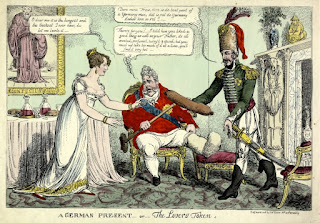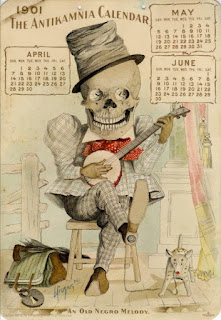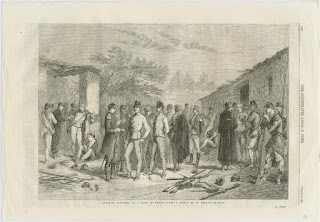




Medical Caricatures from 1736-1932 at Lowcountry Digital Library. Other than the fact that the guy has gout, I'd say the second illustration here is just for the risqué.
A collection of things I find that interest me.




































'Moving' panoramas displayed one scene at a time. Attached to rollers, the paintings could be unrolled slowly as a narrator described each vignette to the audience. Markers attached to the paintings would serve as guides for the persons cranking the piece as well as the narrator. An interval would have been announced upon reaching the end of side one, in order for the staff to turn the panorama around for displaying the second side.This sounds fabulous.














